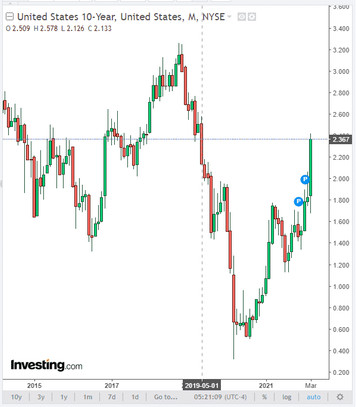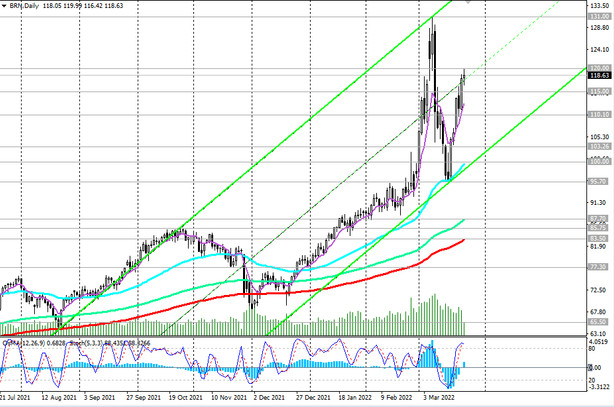The dollar maintains positive dynamics, and the dollar index DXY is growing today for the 5th day in a row, being at the time of publication of this article near the 98.85 mark, in the upper part of the range between the local maximum of 99.42 and the local minimum of 97.71.
US government bond yields and dollar quotes rose after the Fed signaled its intention to aggressively raise interest rates to curb inflation, which reached almost 40-year highs. In his speeches this week, Fed Chairman Jerome Powell confirmed the possibility of a one-time increase in interest rates by more than 25 basis points.

Meanwhile, despite the strengthening of the dollar, oil quotes continue to grow. Fears about the impact of new sanctions on Russian oil supplies and the absence of a nuclear deal with Iran continue to drive demand. Other (besides Iran and Russia) major oil producers, Saudi Arabia and the United Arab Emirates, are not able to increase production quickly.
On Wednesday, WTI oil prices topped $114.70 a barrel, while Brent rose to $117.80 a barrel, receiving additional support after the Energy Information Administration (EIA) announced another reduction in stocks of crude oil, gasoline and diesel fuel in US storage.

According to the released data, oil reserves in the week of March 12-18 decreased by 2.5 million barrels to 413.4 million barrels, and now they are about 13% below the 5-year average, although the volume of oil production in the United States did not change during the reporting week, amounting to 11.6 million barrels per day. Inventories of gasoline also fell (by 2.9 million barrels to 238 million barrels) and distillates, including heating and diesel fuel (by 2.1 million barrels to 112.1 million barrels). They are now about 17% below the 5-year average, according to the EIA.
The EIA data turned out to be much worse than the forecasts, which suggested a not so significant reduction.
Analysts of the oil market predict a further rise in prices in the event of a protracted military conflict in Ukraine and the emergence of a global energy crisis. The US and UK have already banned the import of Russian oil, although some countries (notably Germany and Hungary) oppose such a decision. This week, EU and NATO leaders will meet, and as a result of the meetings, a new package of sanctions against Russia, primarily against its energy sector, may be adopted.
Brent oil futures jumped to $120.00 per barrel early in the trading day, and experts expect prices to rise further, while signals from Russia of a further reduction in exports are coming. For example, one of the pipelines (with a capacity of 1.2 million barrels per day), which supplies oil to the Black Sea coast, may be stopped for a lengthy repair.
According to oil market analysts, sanctions and difficulties with financing transportation may lead to a reduction in Russian oil exports by 3 million barrels per day (according to some reports, up to 4.3 million barrels per day), and the oil market may lose about 3% of the global suggestion. This volume will not be quickly replaced by other sources of supply, and oil prices will continue to rise. At the beginning of the month (March 7), Russian Deputy Prime Minister Alexander Novak said that Europe would not be able to quickly replace Russian oil, and the market price for oil would reach $300 per barrel or higher. In this case, not only European consumers will suffer, for whom the price of energy carriers will soar, but also American ones. Even if Russia's military special operation in Ukraine is completed in a short time, which some analysts already doubt, the negative consequences for the entire global economy will persist for a long time to come.





